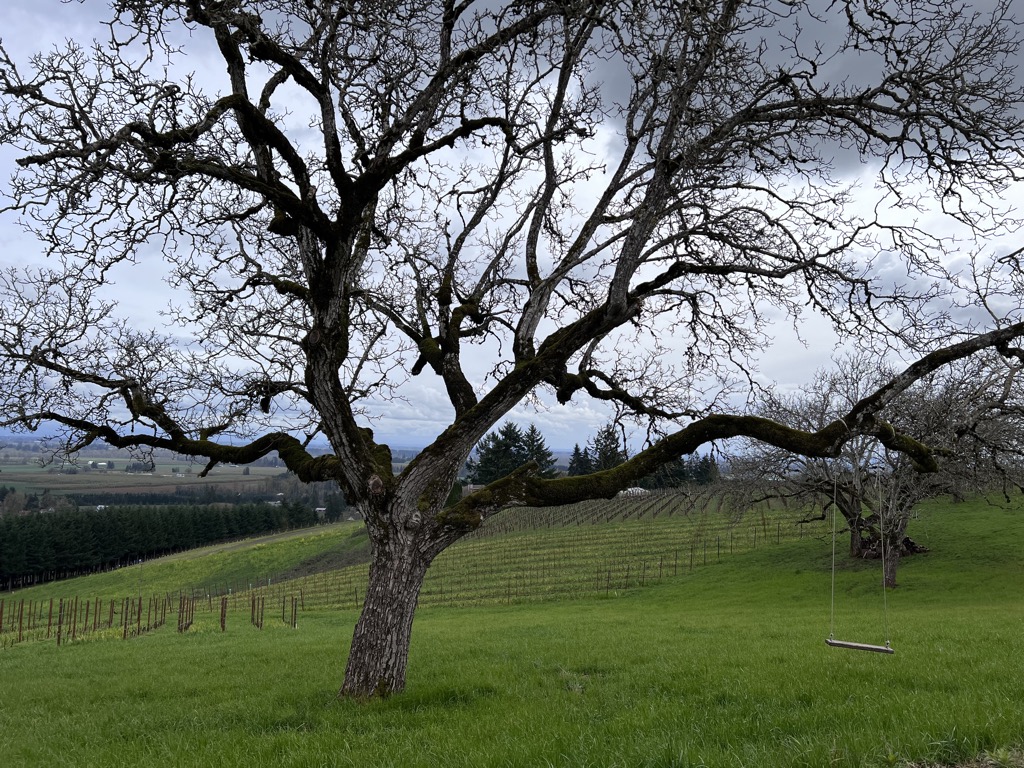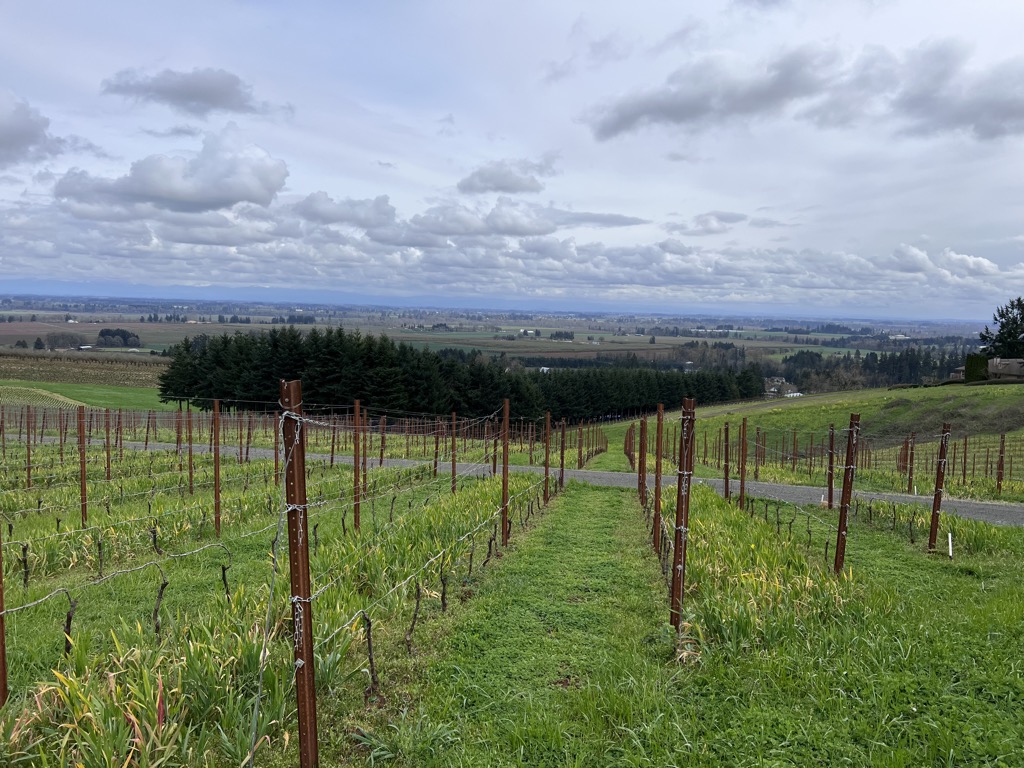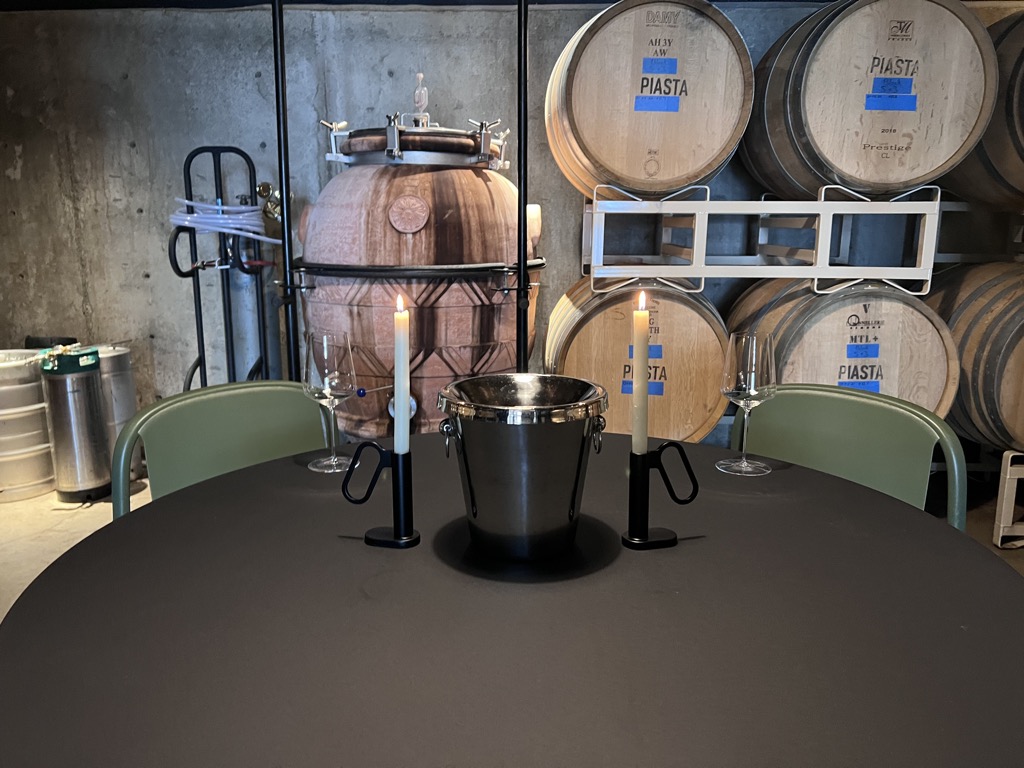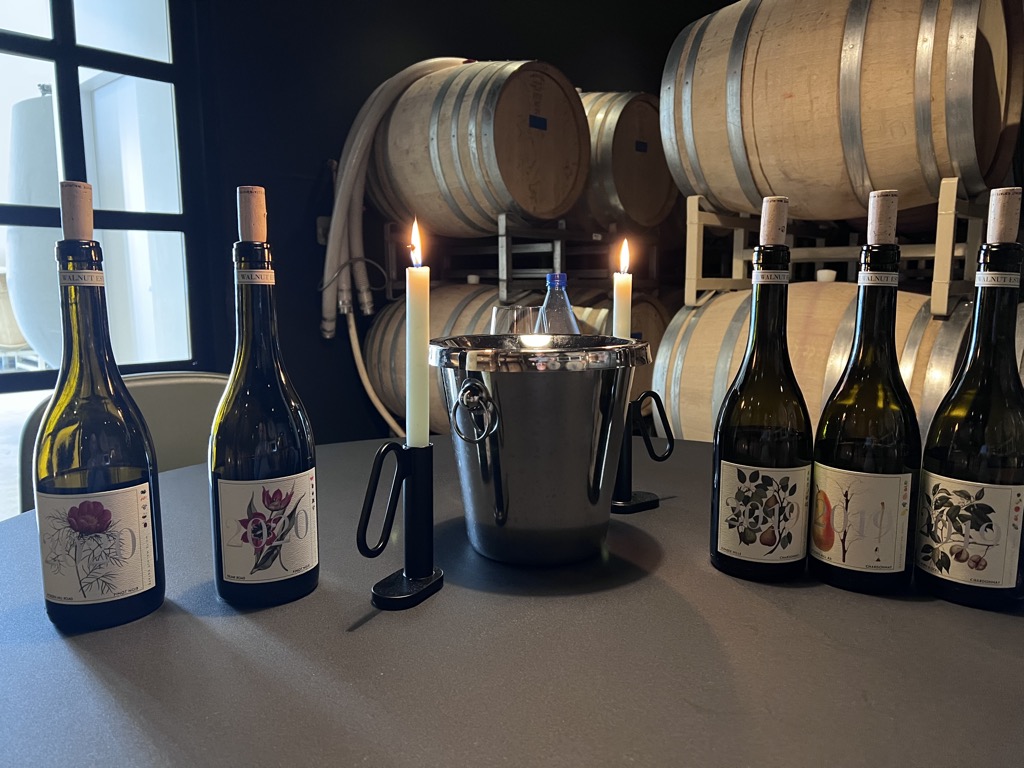When we hear about a new winery opening, there is always a backstory of the who and the why. There are many stories where the backstory consists of a lifelong dream of wanting to own a vineyard and make wine with little to no experience in the field. However, on occasion, time, hard work, and dedication to the winemaking craft are at the forefront of the story.
Today’s story goes back to July of 2000, when winemaker Chris Mazepink made a decision sitting by the Willamette River in Corvallis over dinner. He saw snow-capped mountains, salmon rolling in the river, and the pursuit of a graduate degree at Oregon State to further his education in the world of wine leading to White Walnut being open to the public in April of 2021.
Coming from NY, Chris worked for a wine shop during college, exploring as many bottles as possible while enjoying downhill skiing and fly fishing. A few weeks before graduation, Chris figured he needed to decide what he should do in life. His three main interests of skiing, fishing, and wine brought him to Corvallis to check out the wine program at Oregon State. Sitting there at dinner, he could still enjoy skiing and fishing while making wine a career.
Chris ended up leaving Oregon State early and faxed his resume to every winery in the state. There weren’t very many wineries around in the early 2000s, and he was hired by Joe Dobbs, who was working at Willamette Valley Vineyards at the time.
Tangent time! I wasn’t aware that Joe Dobbs worked for WVV at all, but come to find out, Joe apprenticed with Dominique Lafon, who ended up giving a letter of recommendation to Jim Bernau. In 2002, Joe left WVV to start Dobbes Family Estate and Wine by Joe, and it is quoted by Jim Bernau, “My biggest regret is not being able to grow Willamette Valley Vineyards fast enough to keep Joe,” he said. “I hold out hope that one day we will make wine together again.”
Getting back to Chris, after WVV, he ended up being the Assistant winemaker at Shea. At the time, Shea was renting out space at Adelshiem to make their wine, where the goal was to make the best wine possible. Chris helped get Shea in the top 100 of Wine Spectators Top 100 list at number 15.
He went to Benton Lane from Shea, where the goal was to make the best value wine, and two wines made the top 100 list. After Benton Lane, he spent the next 5-6 years at Archery Summit as general manager and head winemaker. The intent was to be part of something bigger and make the best wines in Oregon.
In 2009, Chris started a venture on his own called Ebony Wines. He wanted to explore other grape varieties and regions. However, there was one limiting factor Chris put on himself. He must have the ability to drive to the region and back home in one day. He made around 3-4,000 cases a year, but something unexpected happened. There were 3 barrels of Chard tucked away in a corner that spoke volumes to him. So instead of selling the other bottles, Chris would have customers taste from these barrels. These barrels fueled his passion for Chardonnay and a harvest of White Burgundy in 2012.
The following year, in 2013, Chris purchased an 11-acre parcel that was an abandoned walnut orchard with blackberries running crazy all over the place. Squirrels loved the property with blackberries and walnuts to eat for days! Chris had to clear a tunnel through the blackberries to get soil samples. It was intense. Clearing the land by hand in 2014, I am sure the squirrel community published the children’s book “Those Darn Squirrels” to show some sort of uprising.

Chris has two sons who have helped with the land we know today as White Walnut, and watching his sons on the land, he came to a realization. He wanted his sons to have the ability to put anything in their mouths that came from the land. So, with no prior experience in organic or Bio-Dynamic farming, Chris set out to become LIVE and Demeter certified. Today, even the walnuts coming off the property are certified organic. Chris’s philosophy is 90% farming and 10% winemaking.
When visiting the White Walnut Estate website there is a whole section on polyculture. If you are not familiar with the term, it means “growing more than one crop species in the same space at the same time to help mimic the diversity of natural ecosystems” (thanks, Wikipedia). A more straightforward way to communicate Chris’s ideology of polyculture is to use the term “field blend.”
In 2015 Chris planted half the vineyard and the remaining half in 2016. Usually, when vineyards are planted, blocks have specific clones to help keep track of what the blends should become at harvest. However, with a field blend, the possibility of having ten clones in the same block isn’t out of the question.

2018 was White Walnut’s first harvest to the young vines, but the actual harvest was in 2019 with a more significant crop. So, during the lockdown of 2020, Chris and his sons spent seven days a week building the winery. His mom would come out to help support by bringing out Gatorade and food. She also documented the process by taking pictures and videos.
2021 everything took shape with landscaping and opening up to the public in April. It took me eleven months to get out and visit, even though I read about Chris from a couple of friends and Owen Bargreen’s write-up. Knowing what I know now, I wish I had visited sooner!
If you were driving from Dundee towards McMinnville and noticed a blue tourist sign on 99W signaling for Nysa Vineyard, White Walnut is on the same gravel road. Turning off Trunk road, I drove through the vineyards to an excellent facility where Chris was waiting for me.

Sitting in the middle of the barrel room was a candlelit table with an amphora simply sitting there in the background. Before any wine was transferred from bottle to glass, Chris and I discussed Oregon Sparkling. I can’t quite remember what sparked the conversation, but I enjoyed the engaging intellectual dialogue. I am the eternal optimist, thinking it’s super easy for Oregon to get on the map for Sparkling. However, listening to Chris speak of the low volumes of Sparkling produced and the likelihood of it leaving Oregon’s borders is pretty darn low still has me pondering. He made a great point, and so how does Oregon Sparkling make a mark on the wine world with most producers making less than 200 cases when Champagne producers like Charles Heidsieck make over 400k cases a year. I think Joe Dobbs does about 200k cases a year. Things that make you go, hmmm.
Finally, let’s talk wine! Remember those 3 barrels of Chard Chris found fascinating earlier in the story? I freakin adore the ever-loving freak out of Chris’s Chardonnay. It might take a long time for Oregon to get on the map for Sparkling, but our Chardonnay game is getting crazy good!

The wines:
2019 Dundee Hills AVA Chardonnay
The nose on this was stellar with excellent acidity. Owen Bargreen gave it a 92
2019 Worden Hill Road Chardonnay
This had a richer mouthfeel with more minerality and a super long finish. Owen Bargreen gave it a 94. James Suckling 94.
2019 White Walnut Estate Northern Blocks Chardonnay
This was my favorite, with killer acidity and a super crazy long finish. Owen Bargreen gave it a 94. James Suckling 93.
I also tasted the 2020 Worden Hill Road Pinot Noir and the 2020 Trunk Road Pinot Noir. I am struggling with 2020 Pinots that weren’t picked before the fires. However, I enjoyed the Trunk Road Pinot over Worden Hill, and I went home with a bottle of Trunk Road. With Chris’s expertise and dedication, I feel it is worth the money to go home with his 2020 Trunk Pinot.
It’s so difficult to have more than a few bullet points about a wine when tasting with a winemaker while holding a conversation. Since my visit, I had Chris’s Chardonnay on two different occasions, and I have to say, oh my goodness, give me more! I have zero doubt that his Pinots outside of 2020 are exceptional, but I haven’t had the chance to taste them. This summer, I plan to visit again to taste Chris’s 2021 Pinot to explore thoroughly.
White Walnut itself is relatively new to the block, but looking over Chris’s experience and the journey, you can’t help to see the quality he produces. Outside of wine, the dedication to the long-term vision speaks volumes to one who is easily distracted by the number of squirrels darting in front of me daily. One other trait I see from Chris is that he doesn’t take the time to celebrate his accomplishments. If you remember, I told you Chris’s mom documented the building process through pictures and videos. She put all of these memories onto a flash drive and gave it to Chris for Christmas. Unfortunately, he had never taken the time to reflect on his accomplishments, and seeing everything in a progression of time struck a chord with him.
It’s rare to see one man clear a vineyard of blackberry, plant vines, build a winery and produce exceptional wine. It has taken Chris twenty-two years to reach this point, and it has paid off big time for him. I highly encourage you to visit his website, make an appointment, and explore his hard work in a glass. When you sit down across the table from him, my only request is to tell him, “A.J. sent me!”
With Gratitude,
A.J. Weinzettel